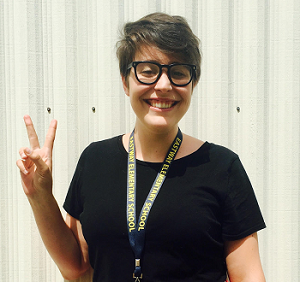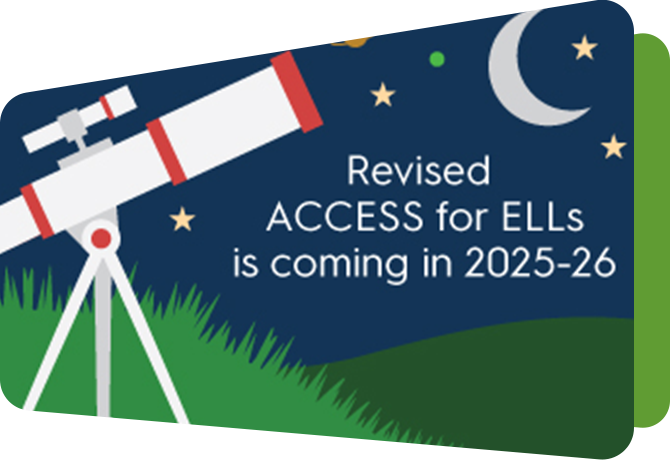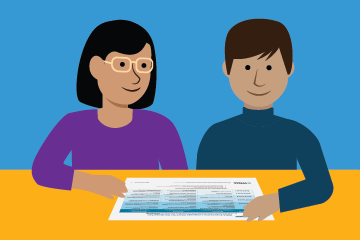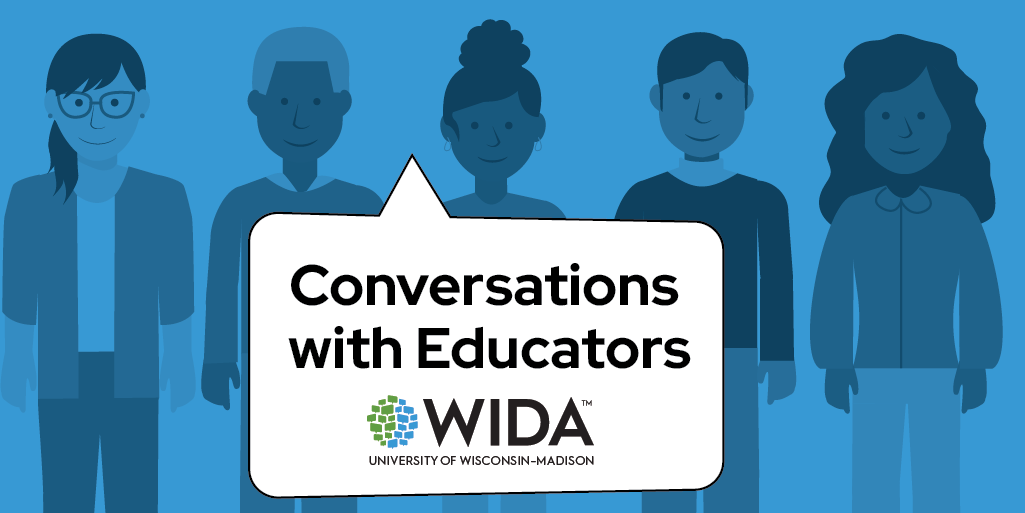October 2018 Featured Educator: Abigail Billman

Where do you teach? What grades? How long have you been a teacher? What is your current position and how long have you been in this role?
I’m at Eastway Elementary School in Durham Public Schools. I actually am a product of Durham Public Schools. I attended elementary through high school in Durham and actually came back unexpectedly after college. I was supposed to teach English in Mexico for a year at least, but that fell through, so I found myself looking for a job in Durham. I knew I wanted to work with young children, so elementary was the path. My primary teaching license is in Spanish. The ESL is my add-on license, and I just found this ESL job. It was serendipitous.
Describe your class, school, and district. Please tell me a little about its location, size, and the composition of the student body? What do language services look like in your school?
Eastway is an urban population, urban school. We are on Year 3 of a school improvement grant. We grew last year from an “F” rating to a “D” rating, so there has been movement. It has been a Title I school for a number of years. The student demographic is about 50 percent Black, 50 percent Hispanic. It’s a very large building – we have somewhere around 500 Pre-K through Fifth grade students. The number fluctuates, but right now we have about 180 ELs in the building, about 40% of our population. We do not have a dual language program.
What do you love about your job? What’s really exciting to you?
The things that are exciting for me, that I love the most about my job, are just being able to build relationships with my students and to be a person that can help support their curiosity and discovery. I also love building their academic skills so that they can be successful in school and then in the future. Building their independence. To see them grow into who they are. It's just really an honor. And from a language perspective, I love being able to communicate with students who might be brand new, because it’s a culture shock coming to school in the United States. So being able to help them feel comfortable and “heard” and working with parents and being a resource for my building to work with kids. It’s sometimes crazy, but it’s very rewarding being able to do that between school and home. So it's a special perspective for sure.
Your principal who nominated you said you use a lot of data. I imagine some of that comes from WIDA assessments. Tell me a little bit more about that -- what kind of data do you use and how do you apply that in the classroom?
We have a myriad of data that we sort through. Of course for us, our best data comes to us through the WIDA ACCESS for ELLs test. Looking at those numbers is helpful for learning where my students are, how they've grown. It helps me see how I'm doing as a teacher on a more macro scale. Because there is a year between administration of the ACCESS assessment, we use a lot of in-class data as benchmarks.
How do you engage parents in their children's education?
This year we have an initiative that involves each teacher making two positive parent contacts every week. We do have translation help in the building to help our Spanish-speaking families. We send home newsletters with resources, dates, and information they can use at home to support their children. We also host multiple parent nights a year. That would include things like Title I night, Black History Month night, and things of that nature.
What about the students themselves? I'm sure you get a lot of joy and inspiration from them, but what are some of the things the kids demonstrate and how do you keep them motivated?
Every year is a little bit different and I’m figuring things out. What I’ve really found working in my classroom is that I need to build a really strong, structured environment for my students with lots of positive reinforcement and community-building right from the get-go. Even though the students don’t spend most of their time with me, we have our own systems. For instance, we start every single class session with a class pledge that is student-led. Directly after that, the students are able to share positives that are happening in their lives; they are simultaneously practicing oral academic English. We have a point system in my class where the students earn points for anything from good behavior to using academic English with mastery. I just really want them to be in a safe place where not only can they explore academic subjects but also enjoy emotional health and mindfulness and kindness.
It sounds like you're creating a very positive environment. WIDA has that viewpoint as well with our Can Do attitude. Do you use the Can Do Descriptors at all? Describe your planning process to address the needs of your students. How do you manage to collaborate with content area teachers?
When planning lessons, I pull from a very wide net of different standards and try to incorporate all of them so that I’m using them in my lessons. I pull from the WIDA Can Do Descriptors, I pull from our content maps created by our state. Looking at Essential Questions, I Can statements, higher-order thinking questions. All of those components are included in my lesson plans.
You also expand beyond your classroom. I saw your 2016 Donors Choose article for your garden area and the SEEDS program. Is that still active?
We do have our outdoor garden that my colleagues and I enjoy. It's a bit of a collective effort to maintain it. It's recently been taken over by another department, so those students can have more science experiences, which is great. It’s also been dedicated to a student we lost a few years ago. It’s a special part of campus.
At WIDA we really want to help educators help the students. What kinds of things have we helped with, or what kinds of things do you still think you could use as additional support and resources?
I really appreciate that you send out your newsletters frequently and send updates through email about what is happening with WIDA. That’s helpful to stay in the loop. Of course, I look at the Can Do Descriptors all the time. I like the way they’re formatted because they’re very clear and sometimes weeding through other standards or indicators can get a bit wordy, to the point where you might not understand what they’re saying, but I feel that WIDA’s standards are very clear. They’re easy to fit into lessons and help guide instruction. I also appreciate that the students are able to engage in a practice test before they actually take the ACCESS test.
Is there anything else that you think is important for other educators to know about the ways that you assess language learning in your students or help your students with their language development?
I would say the biggest thing that I have learned, the most important thing for me, being a teacher, is that relationships are the most important thing. Kids learn from people they trust and love, so if we can, we should create an environment that is, yes, rigorous and challenging, but is still safe and supportive. Building those relationships is everything. That would be my number one take-away from my career so far.





